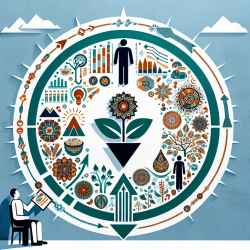Understanding the Study
This research explores the importance of accurately specifying spatial adjacencies and weights in Bayesian spatial modeling. Conducted on fall injuries among seniors in Ontario, Canada, the study highlights how inaccuracies in digital maps can affect model outcomes. It emphasizes the need for correct adjacency information and explores different methods for assigning spatial weights.Key Takeaways for Online Therapy Practitioners
Here are some practical applications of the study’s findings:- Accuracy in Data: Ensure that the digital maps and spatial data used in your assessments are accurate. Inaccuracies can lead to incorrect risk estimations and therapy outcomes.
- Variable Weights: Consider using variable weights based on relevant factors such as population density or expected counts. This approach can improve model fit and provide more accurate risk assessments.
- Model Fit: Pay attention to the Deviance Information Criterion (DIC) when evaluating model fit. A lower DIC indicates a better fit, which can enhance the reliability of your therapy interventions.
Encouraging Further Research
The study suggests that equal weights can lead to over-smoothing and incorrect identification of risk factors. By exploring different methods of specifying spatial weights, you can contribute to the advancement of online therapy practices.Implementing the Findings
To implement these findings in your practice:- Review and verify the accuracy of spatial data and digital maps used in your assessments.
- Experiment with different methods of assigning spatial weights to see which provides the best model fit for your data.
- Use tools like WinBUGS to apply Bayesian hierarchical models and improve your risk assessments.
To read the original research paper, please follow this link: Exploring the Specifications of Spatial Adjacencies and Weights in Bayesian Spatial Modeling with Intrinsic Conditional Autoregressive Priors in a Small-area Study of Fall Injuries.










